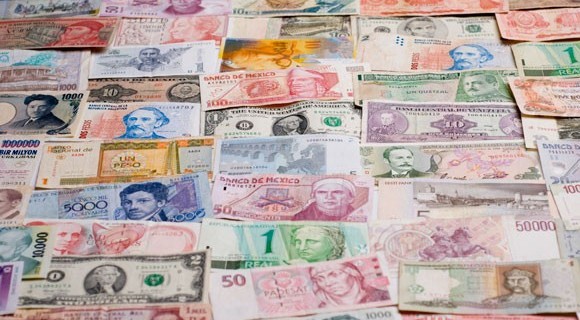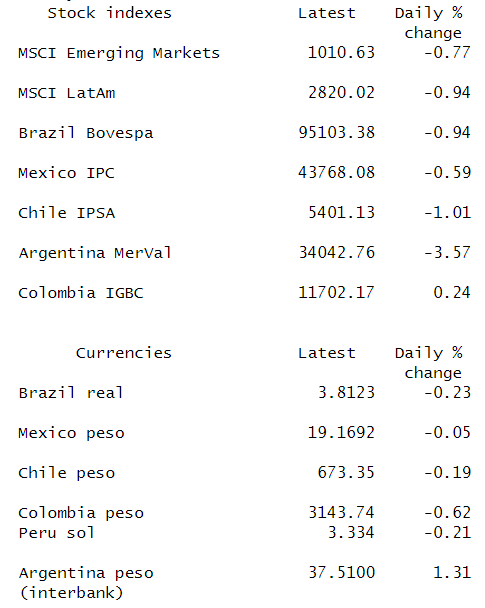Emerging-Market currencies drop; Latam stocks fell sharply

Latin American stocks fell sharply on Tuesday, in line with world stocks, as global growth slowdown fears gripped markets after the International Monetary Fund cuts its growth forecast.
The IMF revised its 2019 global growth forecast lower than what it had forecast in October, a day after risk sentiment was hurt by China saying its economy grew at its slowest rate in 28 years.
The MSCI Index of Latin American shares fell nearly 1 percent, with Brazil stocks shedding 0.9 percent, and Argentine equities tumbling 3.6 percent and posting their biggest one-day loss in more than one month.
“Equity markets (are) in negative territory and overall trading with greater risk aversion in view of a lower global growth outlook with the IMF cutting its … forecast, as well as a perception of scarce progress in trade negotiations between the U.S. and China,” analysts at Banorte said in a note.
On the Sino-U.S. trade front, investors now look toward the high-level meeting at the end of January for the next round of trade negotiations.
In Brazil, consumer stocks were the biggest losers with meat distributors Marfrig Global Foods and BRF leading losses after Saudi Arabia trimmed its list of authorized Brazil chicken exporters.
State oil firm Petrobras was one of the biggest drags as oil prices fell.
Mexico’s IPC index declined 0.6 percent to its lowest in a week, while Chilean shares dropped 1 percent.
Among regional currencies, the Brazilian real fell the most, down 1.6 percent to its lowest since Jan. 2 after President Jair Bolsonaro tried to appeal to big businesses at the World Economic Forum in Davos, but disappointed investors by failing to detail highly anticipated pension reforms plans.
“The pension reform plan is the most important thing for Brazil and for Brazil markets, and any lack of clarity is going to weigh on the currency,” said Christian Lawrence, a senior market strategist with Rabobank. Lawrence had not expected the president to discuss pension reforms at the Forum.
The Colombian peso posted its worst day in nearly five weeks as oil prices declined, while the Mexican peso edged higher.
“The Mexican peso is still attracting carry trades,” said Lawrence. “Today’s down day isn’t enough to trigger movement out of the peso for those involved in carry trade.”
But the currency could see outflows if there are further risks, he said. Perceived policy missteps by the country’s new government are one of the biggest local risk factors for Mexican assets.
Key Latin American stock indexes and currencies at 2142 GMT:

Source: Reuters




























